Smoking is a well-known risk factor for numerous health problems, including lung cancer, heart disease, and chronic obstructive pulmonary disease (COPD). However, many smokers may not be aware of the increased risk they face for developing oral cancer. This blog post will delve into the link between smoking and oral cancer, highlighting the importance of regular oral cancer screenings for smokers.
Smoking and Oral Cancer: A Dangerous Combination
Cigarette smoke contains over 7,000 chemicals, of which at least 70 are known carcinogens (cancer-causing agents). These carcinogens not only damage the lungs but also irritate and inflame the tissues in the mouth and throat. Over time, this constant exposure can lead to abnormal cell growth, potentially developing into oral cancer.
Smokers are at a significantly higher risk of developing oral cancer compared to non-smokers. According to the American Cancer Society, smokers are roughly 15 times more likely to develop oral cancer than those who have never smoked [1]. This risk factor increases even further for smokers who also consume excessive amounts of alcohol.
Types of Oral Cancer Affected by Smoking
There are several types of oral cancer, but smoking primarily affects two main types:
- Squamous Cell Carcinoma: This is the most common type of oral cancer, and smoking is a major risk factor. Squamous cells are the thin, flat cells that line the inside of the mouth and throat.
- Oropharyngeal Cancer: This cancer affects the tonsils and the back of the throat. While traditionally linked to HPV (Human Papillomavirus), research suggests smoking can also contribute to its development.
Signs and Symptoms of Oral Cancer
Being aware of the potential signs and symptoms of oral cancer is crucial, especially for smokers. Early detection is vital for successful treatment and improving survival rates. Here are some warning signs to watch out for:
- Mouth sores that don’t heal within two weeks
- Red or white patches on the gums, tongue, or inner cheeks
- Lumps or bumps in the mouth or neck
- Loose teeth or changes in your bite
- Difficulty chewing, swallowing, or speaking
- Hoarseness or changes in your voice
- Numbness in the mouth or tongue
Why Screenings Are Essential for Smokers
Oral cancer screenings are a simple and painless procedure that can potentially detect precancerous lesions or cancer in its early stages. For smokers, regular screenings are even more critical due to their heightened risk. Here’s why:
- Early Detection Saves Lives: Early detection of oral cancer allows for prompt treatment, significantly increasing the chances of a complete cure. Early-stage cancers often have a higher success rate with less invasive treatments.
- Improved Treatment Outcomes: When cancer is caught early, it’s usually smaller and hasn’t spread to other parts of the body. This allows for a wider range of treatment options with better outcomes and a faster recovery time.
- Minimized Complications: Early intervention can help minimize the need for extensive surgeries or aggressive treatments often required for advanced stages of cancer. These procedures can significantly impact your ability to speak, eat, and swallow.
- Reduced Healthcare Costs: Early detection and treatment of oral cancer are generally less expensive than treating advanced stages, which often involve more complex and costly procedures.
What to Expect During a Screening
Oral cancer screenings are typically performed by a dentist during your regular dental check-up. The process is quick and painless. Here’s a breakdown of what to expect:
- Visual Examination: The dentist will visually examine your mouth, tongue, cheeks, gums, and the roof and floor of your mouth, looking for any abnormalities in color, texture, or size.
- Palpation: The dentist will gently feel your neck and lymph nodes for any swelling or tenderness, which could be a sign of cancer spread.
In some cases, depending on the findings, additional tests might be recommended:
- Biopsy: A small tissue sample is taken from the abnormal area and examined under a microscope to determine if it’s cancerous.
- Imaging Tests: X-rays, CT scans, or MRIs may be used to get a more detailed view of the area and see if the cancer has spread.
Taking Charge of Your Oral Health
Smoking cessation is the single most effective way to reduce your risk of oral cancer. However, quitting smoking doesn’t eliminate the risk entirely. It’s still crucial for smokers to be proactive about their oral health by:
- Scheduling Regular Screenings: Discuss your risk factors with your dentist and establish a regular screening schedule. The frequency of screenings may vary depending on your individual risk profile.
- Performing Self-Exams: Regularly examine your mouth for any changes or concerning signs. Early detection is key.
- Maintaining Good Oral Hygiene: Brushing your teeth twice a day, flossing daily, and visiting your dentist for regular cleanings can help remove irritants and keep your mouth healthy.
- Limiting Alcohol Consumption: Excessive alcohol consumption, especially when combined with smoking, further elevates your risk.
- Healthy Diet: Eating a balanced diet rich in fruits and vegetables provides essential vitamins and antioxidants that can support your overall health.
Smoking is a significant risk factor for oral cancer. However, by taking proactive steps like quitting smoking, getting regular screenings, maintaining good oral hygiene routines, and adopting healthy lifestyle habits, you can significantly reduce your risk and improve your overall oral health.
Don’t wait until you experience symptoms to get checked. Schedule an appointment with your dentist today, especially if you’re a smoker. A simple screening could potentially save your life.

